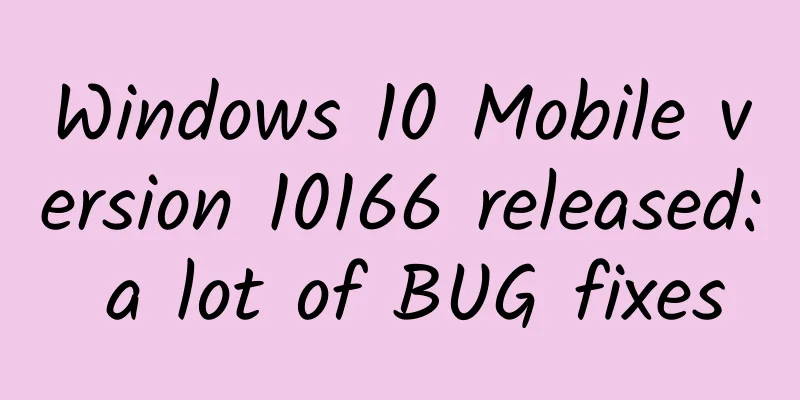How does Xiaohongshu operate its community?

|
As a product with community attributes as its main feature, Xiaohongshu is constantly empowering itself with its rich content, thus generating new vitality for the platform. This article uses Xiaohongshu as a case study to analyze some insights into community operations , and provides some new thoughts through a brief summary of the content community section of Xiaohongshu. For many community products, they will encounter such troubles in the middle and late stages of development: due to the increase in users, the content becomes watered down, and the uneven levels of users lead to the loss of high-quality users, which destroys the original good community atmosphere. Xiaohongshu, as a product with community attributes, has been in operation for five years since 2013. The boundaries of community content have also expanded from sharing overseas shopping content such as beauty and skin care to sharing consumer experiences and lifestyles in various categories such as food, travel, clothing, and digital products. In the past, the content was mainly focused on women, but now it has gradually begun to add tabs with male themes. Xiaohongshu is constantly trying to expand the boundaries of content. The community atmosphere has not been destroyed, and the community tone has not been lowered. On the contrary, the rich content input has continuously empowered the platform and brought new vitality to the platform. In the past, I have had some experience in community operations. I once thought that "hodgepodge" content would destroy the community ecology, lower the community's tone, and gradually cause community users to disappear. The case of Xiaohongshu has made me rethink some of my past understandings of community operations. Through a brief summary of the content community section of Xiaohongshu, I have some new thoughts, which I would like to share with you here. Then and NowIn the past, when we were building communities, we often encountered the following difficulties or problems:
When we build a community platform, there are relatively few creators, and in order to create a high-end community atmosphere, we will look for users who can produce high-quality works. These users are at the top of the pyramid and are very small in size, so usually this small group of creators will have their creativity "exploited" by multiple platforms. However, although these top users play a role as experts, KOLs and other benchmarks in the community, due to the difficulty in creating content, PGC's ability to educate and train ordinary UGC is limited, and the conversion effect from the top to the bottom of the tower is minimal. (This is a common pyramid diagram. The models are almost the same. Here we extract the more popular model on the Internet) We all know that it is very important to control and screen community content. However, during the operation process, you will find that the supply of high-quality content is really limited. If you want to provide enough content for ordinary users to browse, the control of quality will have to be reduced. These are the scenarios we often encountered in the past, but the current situation is that there are more and more content creation platforms, from e-commerce shopping guides to technology sharing, and there is no shortage of creators of various contents. There are many channels to tap into seed users. For any new platform, the difficulty and time cost of acquiring seed users have been greatly reduced. With sufficient funds, we can even quickly achieve mass production of early community content and output of high-quality content through cooperation with MCN agencies and brokerage companies. In the red ocean of content communities, new challenges arise:
We have seen the content community slowly undergo these changes over the years: In the past, the classification of UGC platforms focused on circles and sections, and the boundaries were relatively closed ( Douban groups, forum sections); now, there are blurred content boundaries such as attention, recommendation, and nearby; UGC users have their own diverse label identities (food, skin care); changes in user browsing habits , and information flow- style wandering are gradually in line with the psychological characteristics of women's aimless shopping... Xiaohongshu community operation characteristicsThe following mainly looks at the community operation characteristics of Xiaohongshu from three aspects: publishing tools = content rules, content operation topic guidance, and details determine the experience. Templated publishing tools: Standardized guidance for content productionCompared with other e-commerce content communities, Xiaohongshu's product design in publishing tools has, to a large extent, provided strong guidance for content production. It can be said that the publishing tools are equivalent to the tone rules of the content. The ease of use of the publishing editor has greatly lowered the threshold for creation. Everyone can quickly edit a sharing note without having to use professional equipment and professional tools to create it. For content publishing and editing, users can operate four main types of tools: filters, basic photo editing, labels, and stickers. There are not too many functions added, and creation can be completed in just a few steps. The functional structure is simple but very efficient. The label attributes of Xiaohongshu pictures are probably the most distinctive. Users have also formed a strong community awareness of this. Relevant label descriptions are added to the pictures, forming the unique style of Xiaohongshu. It is very friendly to novice creators by browsing the content of other creators on the platform and imitating their creative style. Stickers have strong IP attributes. Although stickers are used as a tool, a lot of thought has been put into their operation and selection, and the selection of types is also very restrained, such as national flags, mascots, and emojis. Among them, stickers with national flag features combined with current World Cup hot spots and Xiaohongshu's image stickers are conducive to building an IP brand . Not blindly incorporating too many rich categories of sticker elements is equivalent to filtering out a certain amount of content noise in the content publishing process. The community can basically be viewed as a picture-based community in terms of display. Therefore, if the numerous pictures are not screened and processed properly, it is easy to cause a poor user experience visually. The selection and quantity limit of filter styles in the publishing tool can effectively control the visual image of the picture style. In addition, the names of the filters are all based on the geography of the cities: Chiang Mai, Kamakura, Morocco, etc. This operational detail is worth learning. On the one hand, the naming of overseas city geography is in line with the characteristics of Xiaohongshu's overseas shopping. On the other hand, the selection of these cities all has obvious color characteristics, and users have a strong sense of recognition. Xiaohongshu's publishing tool design effectively lowers the threshold for UGC creation from the source of content creation. The operation of labels, stickers and filter materials is equivalent to formulating standards or templates for content creation , which encourages many non-professional users to create high-quality experience sharing notes. Content categories and topic guidesThere are three major categories in the first-level classification: follow, discover, and nearby. It combines the dimensions of people, content, and geographic location, with content as the main focus and people and geography as the supplement, to build a community "field". Under the secondary category of "Discovery", on the content label, a simple comparison with Koala is as follows:
On the one hand, the classification of tags reflects the direction of content operation. On the other hand, it will be split and integrated due to the volume of content and will be formulated in combination with the actual situation of community content. Taking books, movies and music as an example, if there is little relevant content in the entire community and it is arbitrarily split, then when browsing in separate tabs, the amount of content will be small and the user experience will decline. Generally speaking, community content operations for different categories can vary greatly, resulting in differences in the process from seeding products to influencing users’ purchasing decisions. For example, food may be about new discoveries; for fashion bags, people pay more attention to the prices of popular items purchased on behalf of others. For example: Since celebrities have a unique star effect, content operations can not only split the tabs separately, but also integrate the content produced by celebrities into specific categories. In the operation of content classification, it is necessary to grasp the pain points of users under different categories. Community operators must have a deep understanding of the characteristics of categories or scenarios in guiding and controlling content, and develop a distinctive content attribute in combination with the product. Regarding topic guidance, I personally like the search box on the homepage of Xiaohongshu that guides the entry for setting topics and encourages users to discover new content. For sales considerations, search box operations in e-commerce scenarios usually point to product shopping guides or promotions. The search copy of Xiaohongshu Mall and the homepage content search guidance copy are separate. Many traditional communities usually guide topics by pinning them to the top, exposing them with banners, and packaging them into activities. This guidance method using a search box is a bit like the hot topics on Weibo. I captured some of their recent topic settings, which are also very interesting. For example, in the topic of recommending a small game , almost all the games uploaded by community users are small games that women like to play, and they are relatively niche or foreign games, which are very consistent with the community tone of Xiaohongshu. The new fat house happy water, contrary to the greasy image of cola and pizza, opens up new ideas. The new homemade lemon soda happy water not only encourages a healthy lifestyle, but also combines with hot topics without any negative emotions. Combining the World Cup hotspots with the sticker operation of the publishing tool, this wave of operations has guided users to output new content. Therefore, the topic setting and content classification of community content need to be carefully considered. Details determine the experienceContent community products: pictures, texts, and videos are the core of the platform. The more detailed the packaging and operation of the content, the more effort will be put into polishing the tone and atmosphere.
There are many more details that can be used as examples, so I will not elaborate on them. Every detail of the community is a process of creating atmosphere and ecology. In addition, content recommendations also rely on personalized recommendations based on multiple factors such as user tags, shopping behaviors, interests, etc. to improve traffic distribution and conversion, which will not be discussed in depth here. Final ThoughtsUnder the new dilemma of community operation, we may need to explore the following aspects:
The author of this article @斜小歪 is compiled and published by (Qinggua Media). Please indicate the author information and source when reprinting! Product promotion services: APP promotion services, advertising platform, Longyou Games |
>>: APP promotion scenario: let users actively download your product!
Recommend
Sogou Maps launches mobile AR real-time high-precision navigation: real-time vehicle distance calculation, collision warning
On January 9, Sogou Maps launched the AR real-lif...
WeChat iOS invites developers to participate in the 8.0.14 beta update: Mini Program cover advertising issues fixed, etc.
[[423112]] September 10 news: Thanks to IT Home n...
Intensive knowledge output, what does tiger mean to the Chinese?
The tiger is one of the twelve zodiac animals and...
How to build a growth system based on user behavior?
This article is based on the "WHAT-HOW-WHY&q...
As application developers, how do we build a performance testing plan?
[51CTO.com Quick Translation] Developing a perfor...
Are wristbands a viable solution to the problem of video game peripherals?
Since the beginning of the year, motion-sensing b...
Geely suddenly hits the brakes: December sales plummet 39% and market value evaporates HK$32 billion in 5 days
Has the turning point arrived? What happened to G...
Kobe Bryant endorses Ele.me, and it only takes five steps to pass the level!
These days, Kris Wu is the spokesperson for Honor...
Will eating too much MSG give you a headache? "MSG is misunderstood" sparks heated discussion
If salt is the saltiest seasoning in your home, t...
Data Operations: How to do data analysis for market growth!
Written at the beginning: This article is transla...
Turtle Class Tik Tok Becomes Real Combat Training Camp 2
With the arrival of March, our Turtle Class Tik T...
How does Tongcheng operate blind boxes that are popular all over the Internet?
Tongcheng Travel spent only 9 yuan to buy the rea...
What does the time depth isolation experiment that drives people crazy want to prove? Does time really exist?
Recently, there has been a lot of discussion onli...
Unlocking a new experience of smart, fun and fashion, WM Motor grandly landed at the 2020 Chengdu Auto Show
[July 24, 2020] "The number one smart car po...









